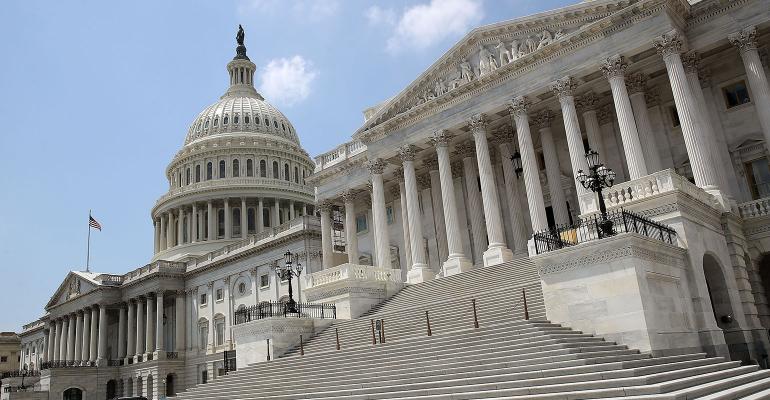This article is the first in a series of articles and webinars designed to demystify the tax policy landscape ahead of 2025, which projects to be a crucial year in Washington on tax policy.
Dawn has just broken on 2024, but the tax community in Washington, D.C. is already looking ahead for what’s at risk if lawmakers don’t address tax policy in 2025. Absent congressional action next year, Americans are staring down $343 billion in tax increases, with $251 billion hitting individuals alone, according to the Congressional Budget Office. The economic and policy landscapes have shifted dramatically since 2017 when Congress passed expansive tax legislation, so we can’t assume the same political will in 2025 to cut taxes that we saw then.
Since then, Congress has injected trillions of dollars into the economy in response to the pandemic, growing the deficit. Soon thereafter, high inflation prompted the Federal Reserve to hike interest rates, which has increased the cost of servicing the deficit from $263 billion in 2017 to $475 billion in 2022, and the Congressional Budget Office projects these costs will rise to 3.6% of gross domestic product (GDP) over the next 10 years, nearly twice as high as in 2022.
Higher interest rates, deficit costs and inflationary pressures aren’t the only economic headwinds staring down Congress. We’re six years closer to Social Security falling into insolvency, projected in 2033, a year sooner than 2017’s forecasts. Medicare spending, which is expected to outpace average GDP growth over the next decade, appears less sustainable without a big infusion of revenue. Calls for disaster relief and more spending to shore up national security priorities have also risen in recent years, begging the question: how will Congress raise enough money or meaningfully cut spending to meet these fiscal demands?
Spending Cuts
Every year spending cuts are on the table, via the budget process, but that represents only about 25% of the federal budget. The other 75%, comprising payments on interest on federal debt, Social Security and Medicare, is known as mandatory spending, and applying cuts to these spending programs requires legislation and political will, which is sorely lacking these days. All of this is leading Congress to seek new ways to raise revenues.
Raising Revenue
Taxing wealth is on the table and the appetite to do something is growing. Throughout 2023, key lawmakers on both sides of the aisle scrutinized portions of the Tax Code most often leveraged by wealthy taxpayers during congressional hearings. While Democrats have traditionally favored making the Tax Code more progressive, rising populism is likely factoring into an uptick of tax proposals from GOP lawmakers aimed at helping working-class and rural families, in some cases at the expense of those with greater means.
Additionally, there’s exponentially more wealth being transferred to younger generations. Over the next two decades, $84 trillion is expected to be transferred to Millennials and Gen X, with $16 trillion projected to be transferred in the next 10 years alone. This impending “great wealth transfer” has caught lawmakers’ attention. Democrats, led by the Senate’s top taxwriter, Sen. Ron Wyden (D-OR), along with President Biden, continue to elevate proposals targeting wealthy taxpayers. Put simply, the opportunity to siphon away government revenues from these private transfers is as great as it’s been in decades.
Indeed, policymakers are already requesting that taxing carried interest, bequests and unrealized income be on the menu the next time Congress considers significantly reforming the Tax Code, likely in 2025. One has to look no further than the White House’s most recent budget request, which can be seen as an aspirational document meant to signal the President’s priorities. In early 2023, President Biden’s budget called for a repeal of the Tax Cuts and Job Act’s tax cut for the highest income bracket, taxing carried interest, raising capital gains rates for those earning more than $1 million and taxing unrealized capital gains for those with hundreds of millions in assets. The White House is expected to release its next budget request this spring, which will set a marker for how Democrats might seek to rewrite America’s financial picture in the coming years.
Of course, Republicans will have plenty to say on economic issues and will be well positioned to execute their priorities because they’re expected to control at least one chamber of Congress after the next election. And polling suggests that Republicans have a good shot at capturing the White House. Traditionally, GOP lawmakers have remained hesitant to target large pools of wealth, but as we noted earlier, populist pressures to rebalance income and wealth disparity are gaining appeal with some key Republicans.
2024 Election
GOP lawmakers are using bills and hearings – both in Washington and across the country – to socialize and fine-tune their economic priorities, which could be elevated, or not, as the GOP presidential nominee’s economic platform comes into sharper focus. The 2024 election will play an essential role in determining what is and isn’t on the table for potential 2025 tax reforms. But lawmakers, committee staff, advocates and stakeholders aren’t waiting idly for the public to vote next November.
That’s why we are proud to bring you this first in a multi-part series on federal tax policy ahead of 2025. We’ll analyze and explore the myriad tax priorities elevated by lawmakers, identify Congress’ key players and influencers, survey how the White House and Judiciary might impact tax policy and keep readers on top of the latest trends in D.C. that hold sway over how taxwriters think, all to demystify the tax-writing process heading into 2025.
Sara Barba, Ali Bedford and Grant Berkshire contributed to this article.





